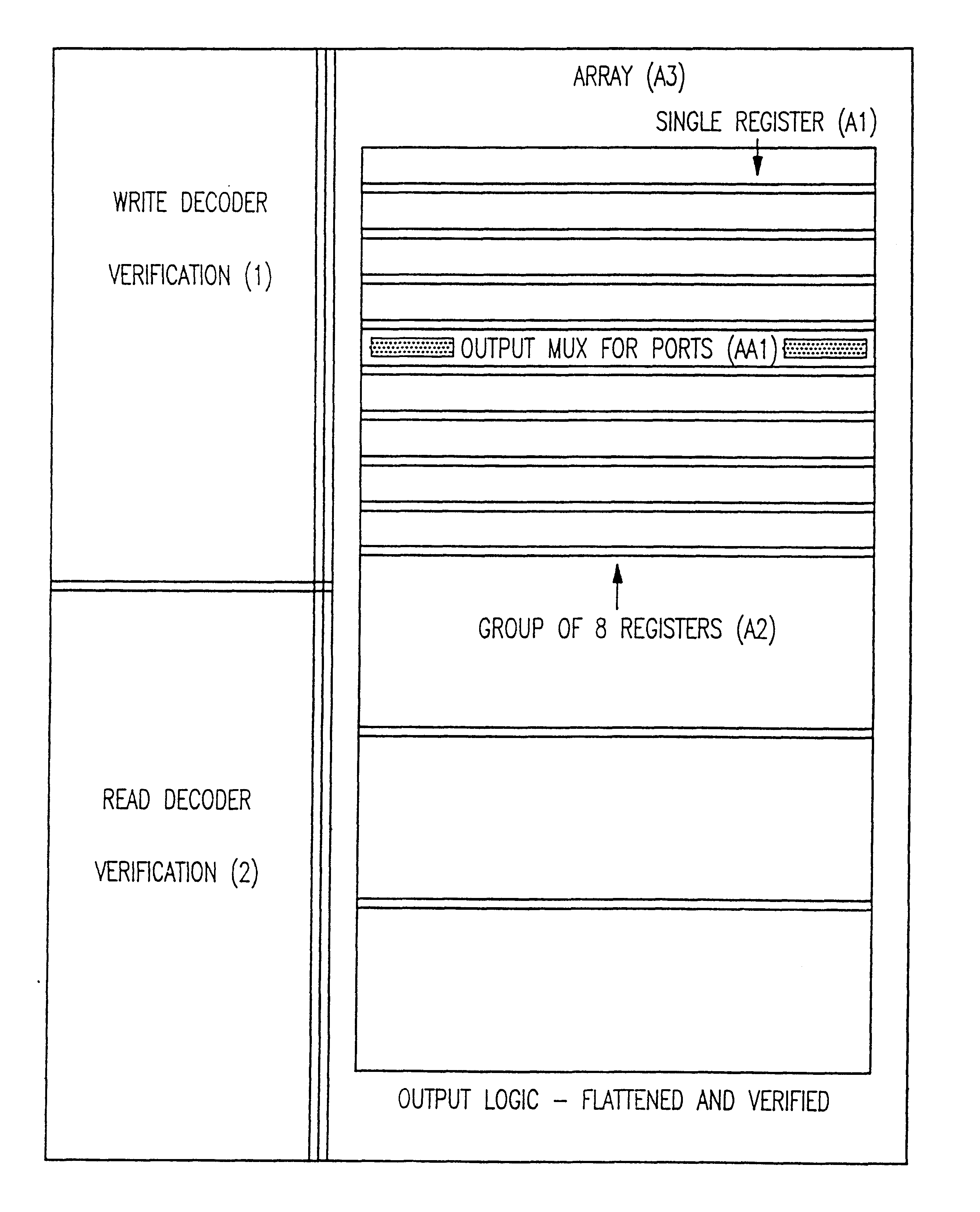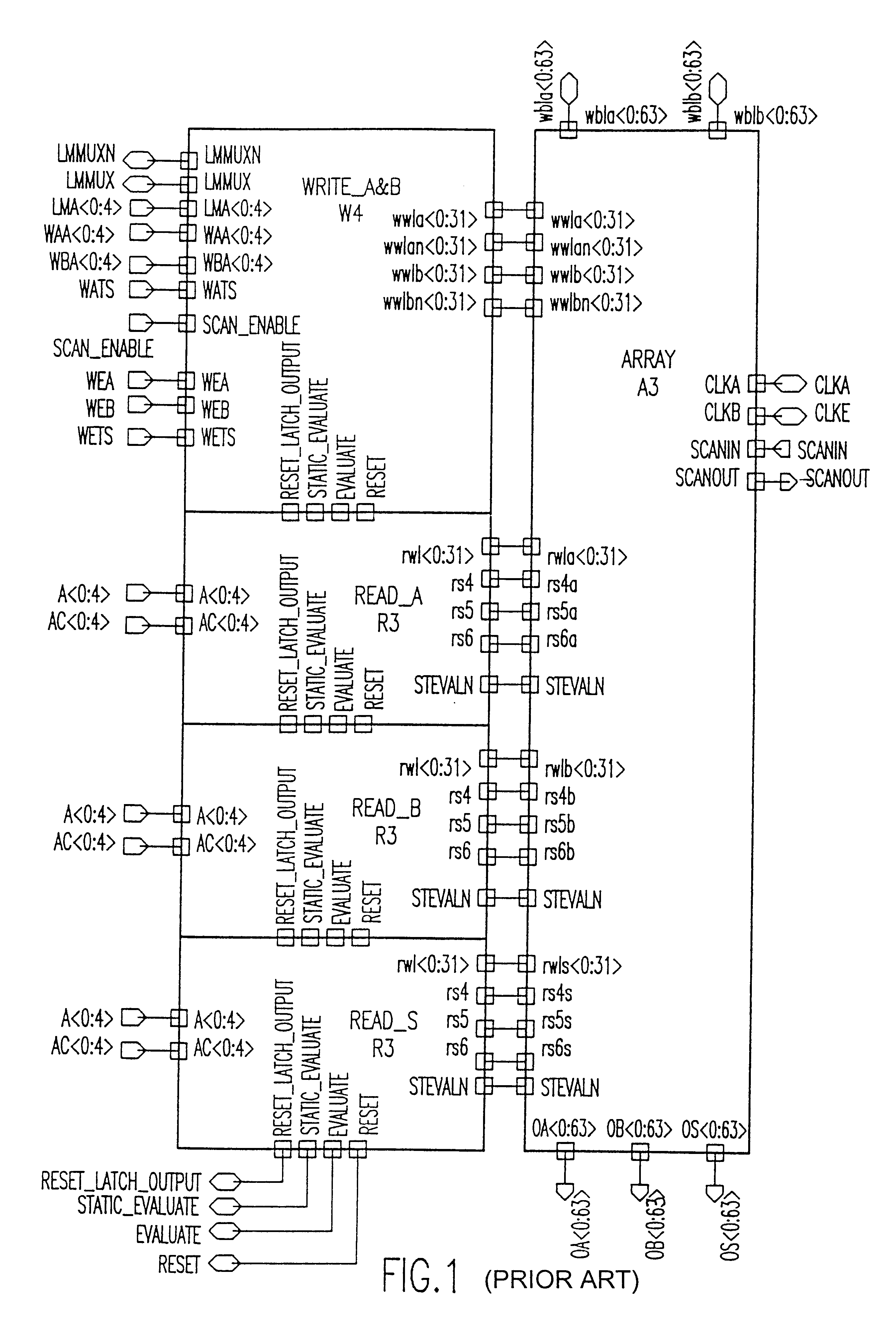Provably correct storage arrays
a technology of provably correct arrays and arrays, applied in the direction of software simulation/interpretation/emulation, program control, instruments, etc., can solve the problems of limiting the possible implementation of styles, and affecting the design effect of arrays
- Summary
- Abstract
- Description
- Claims
- Application Information
AI Technical Summary
Problems solved by technology
Method used
Image
Examples
Embodiment Construction
The process for verification is based on Boolean Extraction of the macro based on various algorithms. Such an extraction is compared with the logic representation. For memory and logic macros, the extraction is tightly coupled with the actual verification step. This makes it possible to efficiently handle special structures such as pass-transistor logic, false CMOS paths or circuits which contain combinatorial loops. This particular methodology checks dynamic circuits and nets which would potentially violate the combinatorial verification model. Also, the verification method for memory circuit is fully customized by user defined extraction rules, such as, for example, the dual rail signal inputs, elimination of resetting paths or precharge paths, black boxing unwanted elements etc. The rule set also includes tests for unwanted circuit situations such as nets which might have floating states.
Logic and Memory Circuit Verification
FIG. 1 shows an example of a memory circuit along with p...
PUM
 Login to View More
Login to View More Abstract
Description
Claims
Application Information
 Login to View More
Login to View More - R&D
- Intellectual Property
- Life Sciences
- Materials
- Tech Scout
- Unparalleled Data Quality
- Higher Quality Content
- 60% Fewer Hallucinations
Browse by: Latest US Patents, China's latest patents, Technical Efficacy Thesaurus, Application Domain, Technology Topic, Popular Technical Reports.
© 2025 PatSnap. All rights reserved.Legal|Privacy policy|Modern Slavery Act Transparency Statement|Sitemap|About US| Contact US: help@patsnap.com



